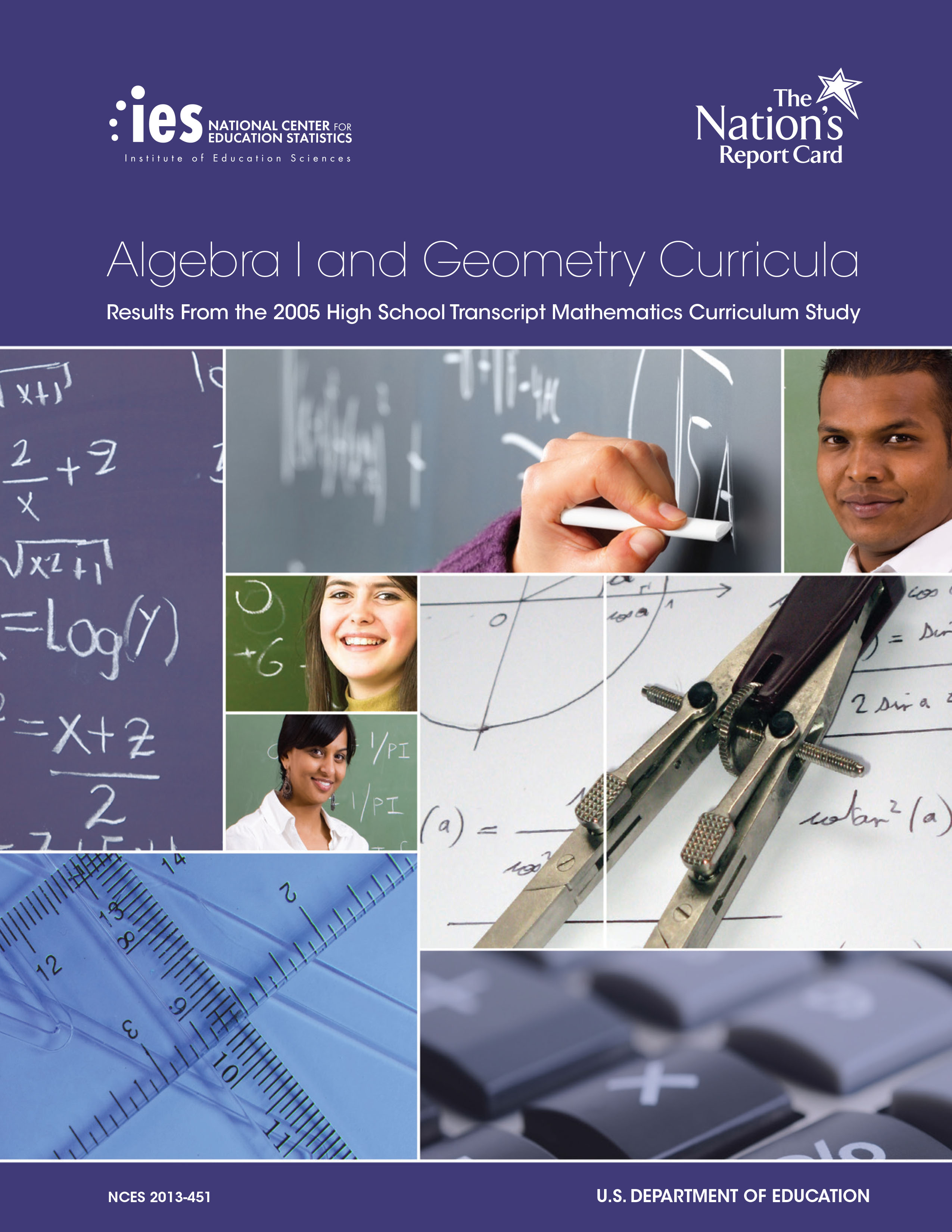
The Mathematics Curriculum Study explores the relationship between student coursetaking and achievement by examining the content and challenge of two mathematics courses taught in the nation’s public high schoolsundefinedalgebra I and geometry. Conducted in conjunction with the 2005 National Assessment of Educational Progress (NAEP) High School Transcript Study (HSTS), the study uses textbooks as an indirect measure of what was taught in classrooms, but not how it was taught (i.e., classroom instruction). The study uses curriculum topics to describe the content of the mathematics courses and course levels to denote the content and complexity of the courses. The results are based on analyses of the curriculum topics and course levels developed from the textbook information, coursetaking data from the 2005 NAEP HSTS, and performance data from the twelfth-grade 2005 NAEP mathematics assessment.
Highlights of the study findings show that about 65 percent of the material covered in high school graduates’ algebra I was devoted to algebra topics, while about 66 percent of the material covered in graduates’ geometry courses focused on geometry topics. School course titles often overstated course content and challenge. Approximately 73 percent of graduates in “honors” algebra I classes received a curriculum ranked as an intermediate algebra I course, while 62 percent of graduates who took a geometry course labeled “honors” by their school received a curriculum ranked as intermediate geometry. Graduates who took rigorous algebra I and geometry courses scored higher on NAEP than graduates who took beginner or intermediate courses.
| To learn more and read the report, click here. |